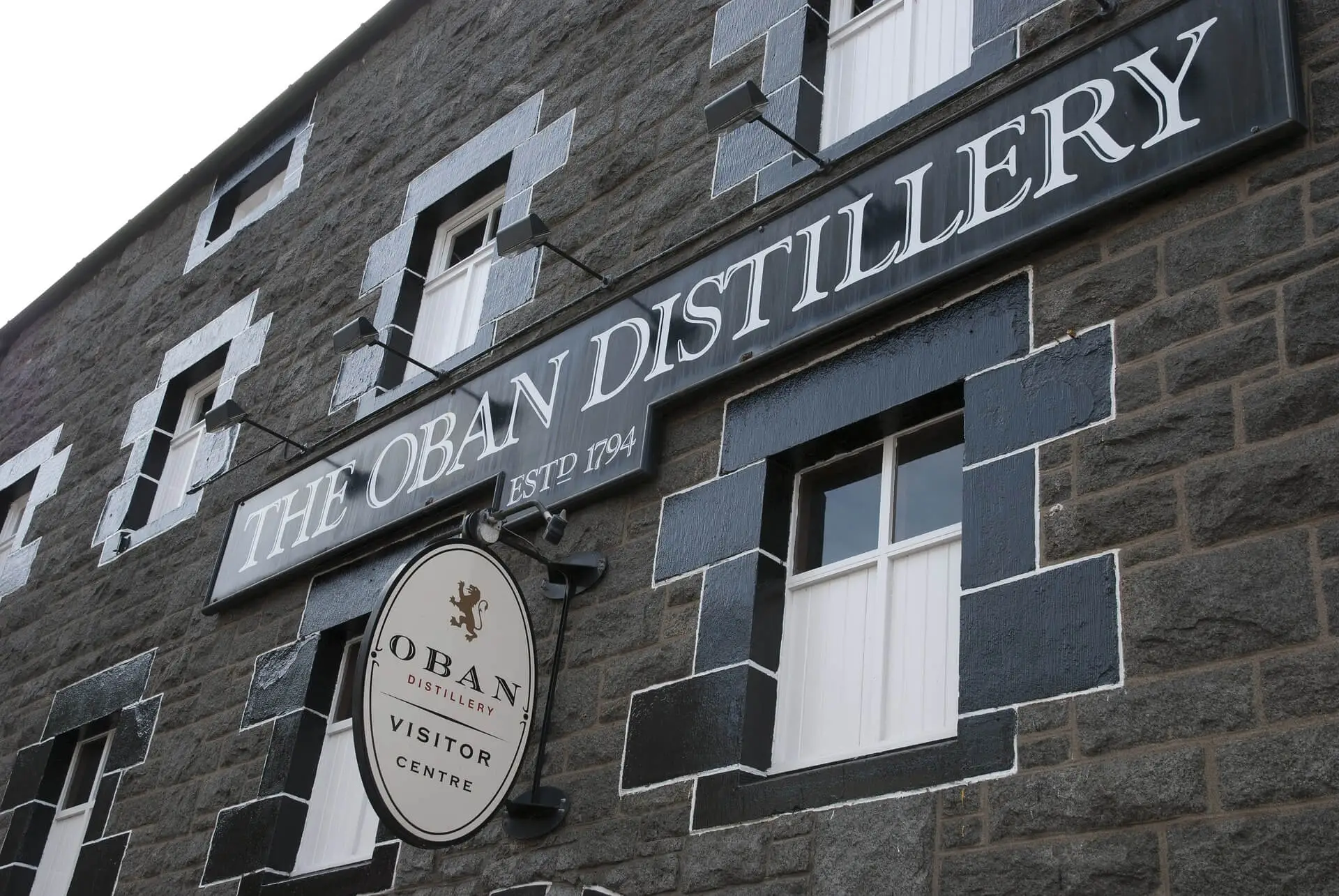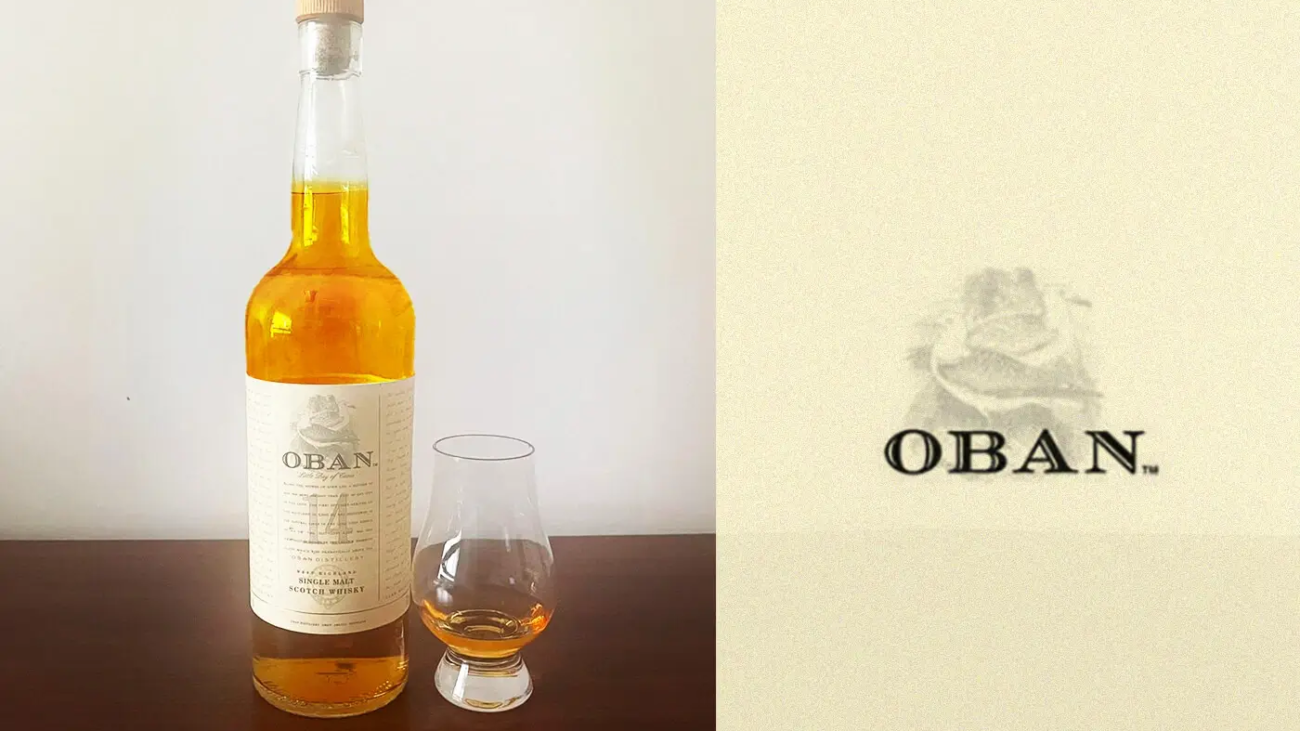Oban 14 offers a unique experience of uniting Highland scotch’s fruitiness with the Islands’ smoky character. While regional microclimate may influence the whisky, I believe it is always about the people and their social heritage that brings out the true essence. And it is no surprise that this tiny west Highland distillery can produce a dram that is well deserved to be recognized as one of the “Six Classic Malts of Scotland”.
Oban 14 Basic Details
- Whisky Type: Single Malt
- Country/ Region: West Highland, Scotland
- Age: 14 Years
- Distiller: Oban Distillery
- ABV (Alcohol by Volume): 43%
- Colour: Added Colour, Olive Gold
- Maturation Casks: Ex-Bourbon American Oak
- Notable Awards & Recognition:
- Gold – 2018 Tastings.com International Review of Spirits
- Gold – 2018 SIP Awards
- Single Malt of the Year – 2018 New York International Spirits Competition
- Silver – San Francisco World Spirits Competition
- Bronze – 2018 New York International Spirits Competition
- Price Range: $85 (Approximately)
Where does the Whisky get its Name?
It is believed that the first settlers of the land where the distillery came to be, landed there in 5000 BC. At the time they sheltered themselves in natural cave formations known as an “Ob”. Such caves were all around the bay where the settlers pitched their tents, thus calling the town “Oban” which in Gaelic means “little bay” of caves.
Even today, this small town can be photographed in a single frame and prides itself on being one of the best in seafaring and whisky-making.
The History of the Oban Distillery

Started in 1793, the Oban distillery stands to be one of the oldest in Scotland. Moreover, it is also one of the last surviving urban distilleries. And like many distilleries in Scotland, Oban has seen its share of rise and fall over the years. To understand this, let us go back to the beginning and plot the distilleries course through the ages.
- 1793: Oban locals, the Stevenson brothers (John and Hugh) founded the distillery.
The roots of the distillery were actually a brewery and the first-ever production at the site was called “Cowbell Ale”.
- 1820: Hugh Stevenson passed away and his son Thomas took over the production management
- 1822: Thomas Stevenson gained full control of the Oban distillery by acquiring the majority of the stock.
- 1829: Thomas went bankrupt owing to a series of futile investments
- 1831: Thomas’s eldest son John managed to buy back the Oban distillery from his father’s creditors for £1,500
- 1866: The distillery was sold to Peter Cumsie
- 1813: The distillery changed hands from Cumsie to James Walter Higgins who refurbished and modernized the setup.
- 1898: The distillery came under the management of Oban & Aultmore-Glenlivet Company led by Alexander Edward and others from White Horse Distillers, James Buchanan & Company, and John Dewar & Sons.
Around this time, the Oban distillery made huge losses owing to the Pattison crisis. The Pattison crisis is an interesting event in Scotch whisky history where after a series of successful endeavors and acquisitions, the Pattison brothers (Robert & Walter) ultimately lost it all to overproduction and inflated stock practices.
Around 1898, Pattison Blends was one of the major buyers of Oban Single Malt whisky and hence the distillery had to bear the brunt of the Pattison crisis.
Moving on, the distillery changed hands again a few times such as below.
- 1923: Owned by Buchanan-Dewa
- 1925: Took over by The Distilleries Company Limited
- 1930: Transferred to the Scottish Malt Distilleries
The distillery remained closed for renovations between 1968 and 1972 and finally, in 1989 the Oban distillery was acquired by Diageo and is operating under UDV ever since.

Today, the whole town of Oban developed around the distillery, and yet, if you take a boat and just row a short distance, the whole town will fit into a single frame. The distillery never changed sites in its centuries of history and, as per the marketing on the website is just 208 steps from the sea.
The Pot Stills & Tubs
The Pot Stills are lantern shaped at the Oban distillery. This is by design to align with the Oban philosophy that the longer the spirit is in contact with copper, the fresher and cleaner the whisky.
The Oban distillery is also one of the few distilleries that still use the Worm tubs in their production process (about 14 other distilleries use this method today). Worm tubes are spiral copper tubes that are immersed in water. The hotter the temperature of the water they are immersed in, the longer it takes for the spirit to condense, thus prolonging the copper contact. In the case of Oban, the water temperature is 45 to 50 degrees Celsius. This typically enhances the meaty notes of the whisky.
The Oban 14 Bottle
The Oban 14-year-old bottle is tall. At least taller than most other whisky bottles. So, if you don’t have an open-top bar shelf, you may find it difficult to fit in. But the long neck of the bottle really helps funnel the aroma when you pop open the cork.
The label on the bottle depicts seagulls, which symbolize the proximity of the distillery to the sea, and the sea salt notes that form a vital characteristic of Oban’s flavor profile. The bottle also talks about the Oban region’s history and lineage which is part Viking and part Celt and how the early descendants came to be. All this definitely adds to the experience of enjoying a dram of Oban 14.

Oban 14 On the Nose
There is an initial blast of sweetness followed by a slight alcohol burn. You can smell the red orchid fruits, some stone fruit dipped in honey. Then there is some citrus zest, which is almost like orange peel. Then there is of course a gentle, almost sublime smoke. This combination is almost like perfume to me.
The Key Notes on the Nose would be:
- Pears
- Figs
- Honey
- Oranges
- Lemons
- Light Smoke
Oban 14 on the Palate
True to its nose, the palate is also fruit-forward. Toffee apples, marmalade, and pears. The spiciness from the casks is also very evident. Honeyed spices like cloves pop up which coats the mouth and gives a good finish. Also, the taste is where I feel the real impact of the sea comes in. There is that briny saltiness along with peat smoke that just teleports you to the seashore.
The Key Notes on the Nose would be:
- Apples
- Pears
- Honey
- Cloves
- Oak
- Sea Salt
- Peaty Smoke
Conclusion
Oban 14 is in many ways true to its Highland roots. But at the same time, the Isla-ish maritime influence is clearly evident. What could have almost been considered an identity crisis, has, in fact, transcended into a unique breed of its own which deserves a spot in your liquor cabinet.
Special thanks to my friend and mentor, Kunal Shah for gifting me this bottle.


Add a Comment